Three years ago, Oliver and I stumbled across Korean chicken bao buns at this cramped little food truck while hunting for fresh tomatoes at our Saturday market. I'll never forget that first bite - the soft, warm bun practically melted around the crispy chicken that was sticky-sweet and just spicy enough to make your nose tingle. Oliver's eyes went wide and he immediately asked for another one. After months of trying to recreate it at home (including one disaster where I set off every smoke alarm in the house), I finally figured out how to make these addictive little sandwiches.
What Makes These Korean Chicken Bao Buns Special
These aren't like the bao buns you get at restaurants that cost fifteen bucks and leave you still hungry. What makes ours different is how we put the flavors together. Most recipes either dump too much sauce and make everything mushy, or they're so boring you might as well eat plain chicken. We found that perfect spot where the gochujang gives you just enough kick without making Oliver's eyes water, and the pickled vegetables cut through all that rich stuff so you can actually eat more than one.
The real trick is not trying to do everything at once like those cooking shows. We split it up into parts that actually work with real life. Cook the chicken when you've got time, make the pickles while you're cleaning up breakfast dishes, then just put it all together when people start complaining they're hungry. Oliver figured out that if we let the chicken sit for five minutes after frying, it stays crunchier in the bun. Sometimes kids notice stuff grown-ups completely miss.
Jump to:
- What Makes These Korean Chicken Bao Buns Special
- Korean Chicken Bao Buns Ingredients
- How To Make Korean Chicken Bao Buns
- Equipment
- Creative Twists on Korean Chicken Bao Buns
- Substitutions
- Storing Your Korean Chicken Bao Buns
- Top Tip
- Why You'll Love This Korean Chicken Bao Buns Recipe
- FAQ
- Time for Korean Street Food Magic!
- Related
- Pairing
- Korean Chicken Bao Buns
Korean Chicken Bao Buns Ingredients
For the Korean Fried Chicken:
- Boneless chicken thighs
- Potato starch (this matters - don't use cornstarch)
- Gochujang paste
- Soy sauce
- Rice vinegar
- Brown sugar
- Fresh garlic
- Ginger root
- Sesame oil
For the Bao Buns:
- Frozen bao buns from the Asian section
- Or make your own if you're feeling brave
Fresh Stuff:
- Napa cabbage
- Carrots
- Cucumber
- Green onions
- Sesame seeds
- Fresh cilantro
Quick Pickled Slaw:
- Rice vinegar
- Sugar
- Salt
- Red pepper flakes
See recipe card for quantities.
How To Make Korean Chicken Bao Buns
Chicken Prep:
- Cut thighs into bite-sized pieces
- Marinate in soy sauce mixture
- Let sit 30 minutes minimum
- Pat dry before coating
Sauce Creation:
- Mix gochujang with liquids
- Taste and adjust heat level
- Set aside for coating
- Make extra for dipping
First Fry (Cooking):
- Heat oil to 325°F
- Coat chicken in potato starch
- Fry 4-5 minutes
- Remove and drain
Second Fry (Crispiness):
- Crank oil to 375°F
- Fry again 2-3 minutes
- Immediately toss in gochujang sauce
- Work fast while it's hot
Steam Buns:
- Follow package directions
- Keep warm in steamer
- Don't overcook or they get gummy
Build Your Bao:
- Open bun carefully
- Add Korean fried chicken
- Top with pickled slaw
- Sprinkle sesame seeds
- Eat immediately
Equipment
- Heavy-bottomed pot or wok
- Thermometer for oil temperature
- Bamboo steamer or steamer basket
- Tongs for safe frying
- Fine mesh strainer
Creative Twists on Korean Chicken Bao Buns
Fusion Flavors:
- Teriyaki chicken bao with pineapple slaw
- Buffalo Korean chicken with blue cheese drizzle
- Honey garlic version for sweet lovers
- Extra spicy with kimchi addition
Veggie Packed:
- Shredded chicken bao with extra vegetables
- Korean BBQ mushroom filling
- Crispy tofu with same sauce treatment
- Mixed protein and veggie combo
Kid-Friendly Versions:
- Mild gochujang with extra brown sugar
- Plain fried chicken with Korean-style slaw
- Mini bao buns for little hands
- Deconstructed bowls for utensil users
Party Style:
- Korean chicken sliders on regular buns
- Bao bar with multiple fillings
- Korean-style street food platter
- Make-your-own-bao station
Substitutions
From feeding various picky eaters and dietary needs in our family, these substitutions actually work:
Protein Options:
- Chicken thighs → Chicken breast (cook a bit less)
- Chicken → Cauliflower florets
- Regular → Tofu for vegetarian version
- Fresh → Leftover rotisserie chicken
Heat Level Fixes:
- Gochujang → Sriracha for milder version
- Full spice → Half portions for kids
- Regular → Sweet chili sauce for wimps
- Standard → Sugar-free gochujang option
Dietary Swaps:
- Regular buns → Gluten-free bao buns
- Soy sauce → Tamari or coconut aminos
- Standard → Air fryer method for less oil
- Wheat → Lettuce wraps for low-carb
Convenience Options:
- Homemade slaw → Store-bought coleslaw mix
- Fresh vegetables → Pre-cut veggie medley
- From scratch → Restaurant shortcuts when you're lazy
Storing Your Korean Chicken Bao Buns
Component Storage (Best Method):
- Fried chicken: 3 days refrigerated
- Pickled slaw: 1 week in fridge
- Sauce: 2 weeks refrigerated
- Assemble fresh when serving
Reheating Tips:
- Chicken: Oven at 400°F for 5 minutes
- Buns: Steam for 30 seconds
- Sauce: Microwave 10 seconds
- Slaw: Serve cold
Make-Ahead Magic:
- Prep chicken coating night before
- Mix sauce up to 3 days ahead
- Make slaw morning of serving
- Steam buns just before eating
Top Tip
- Last month, Oliver made a discovery that's now our secret trick. While I was running around trying to steam the bao buns, he knocked over the jar of sesame seeds, dumping them all over the hot Korean fried chicken. Instead of getting mad, we tried it anyway - and holy cow! Those toasted sesame seeds added this crazy good nutty crunch that made the whole thing taste way better.
- Now we do it on purpose every time. We sprinkle extra sesame seeds right on the hot chicken after we toss it in that gochujang sauce. The heat from the chicken toasts them just enough to make this layer of flavor that has people going "what did you put in this?" Our kitchen disaster became the thing that makes our Korean chicken bao buns different from every restaurant we've tried.
- Oliver tells everyone who'll listen, "Sometimes messing up makes things better!" He's totally right - half our best recipes happened because something went wrong in the kitchen. Now every time we make these buns, we laugh about that crazy dinner when everything was falling apart but somehow worked out perfect.
Why You'll Love This Korean Chicken Bao Buns Recipe
This Korean Chicken Bao Buns actually works with real life. You can cook the chicken ahead of time, chop your vegetables in the morning, and just warm up the buns when everyone's complaining they're hungry. Oliver loves helping crush the garlic and mix the sauce - keeps him busy while I handle the hot oil. Plus, everyone gets what they want. Oliver picks off the spicy stuff and eats mostly pickled carrots while my husband piles on way too much gochujang.
It tastes like restaurant food but uses stuff you can actually find at the regular grocery store. No crazy trips to three different specialty stores or spending your whole grocery budget on weird ingredients you'll never use again. Most of the work happens before dinner chaos hits, and leftovers taste even better the next day. These freeze really well too, so when you're standing in front of the fridge with zero dinner ideas, you've got something good just waiting there.
FAQ
What do you fill a bao bun with chicken?
For Korean chicken bao buns, stuff them with crispy Korean fried chicken first, then add pickled vegetable slaw for crunch and to cool things down. Throw in fresh cilantro, sliced green onions, and sesame seeds. The trick is mixing hot spicy chicken with cool, fresh toppings in those soft steamed buns.
What is Korean bao made of?
Korean bao buns are made from wheat flour, yeast, sugar, and a bit of fat, which makes them soft and steamy. Bao came from China originally, but Korean versions use Korean fillings like gochujang chicken, kimchi, or Korean BBQ with all those Korean flavors and spice levels.
What to serve with Korean chicken bao buns?
Serve these with crispy pickled vegetables, kimchi, steamed edamame, or Korean corn dogs for the full street food vibe. Cold Korean pear slices help cool your mouth between spicy bites. Keep sides simple since these buns are pretty filling and packed with flavor already.
Are bao buns Chinese or Korean?
Bao buns came from China first, but Korean cooks have made them totally their own with Korean fillings and flavors. Korean chicken bao buns use gochujang sauces, Korean fried chicken methods, and often kimchi or Korean pickled vegetables, so they're really a mix of both food traditions.
Time for Korean Street Food Magic!
Now you have all the secrets to making incredible Korean chicken bao buns at home - from the double-frying trick to Oliver's sesame seed mess-up that turned into genius. These soft, warm buns stuffed with crispy, spicy Korean fried chicken prove that the best street food can totally be made in your own kitchen. What started as us being obsessed with a food truck has become our family's favorite dinner when we want something that feels fancy but doesn't require getting a babysitter and spending a fortune at some restaurant.
Looking for more handheld food that actually fills people up? Try our Easy Chicken Avocado Melt Sandwich that's perfect for lunch boxes or quick dinners when you're racing between soccer practice and piano lessons. For something sweet that won't make you feel terrible later, our Healthy Red Velvet Brownies Recipe gives you all that rich chocolate taste without the sugar crash and guilt. And if you're digging these bold, comforting flavors, our Philly Cheesesteak Bowl Recipe has all that cheesy, meaty goodness in an easy one-bowl setup that's perfect for crazy weeknights!
Share your Korean chicken bao buns wins! We love seeing your creative twists and hearing about your own kitchen disasters that turned into something great!
⭐⭐⭐⭐⭐ Rate this Korean Chicken Bao Buns and join our cooking crew!
Related
Looking for other recipes like this? Try these:
Pairing
These are my favorite dishes to serve with Korean Chicken Bao Buns
Korean Chicken Bao Buns
Equipment
- 1 Heavy-bottomed pot or wok (For frying)
- 1 Thermometer (To monitor oil temperature)
- 1 Bamboo steamer or basket (For steaming bao)
- 1 Tongs (Safer handling during frying)
- 1 Fine-mesh strainer (For draining fried chicken)
Ingredients
For the Chicken:
- 1.5 lbs Boneless chicken thighs - Cut into bite-size pieces
- 1 cup Potato starch - Do not substitute
- 2 tablespoon Soy sauce - For marinade
- 1 tablespoon Rice vinegar - For marinade
- 1 tablespoon Brown sugar - For marinade
- 2 cloves Garlic - Minced
- 1 tablespoon Ginger root - Grated
- 1 teaspoon Sesame oil - Optional but recommended
For the Sauce:
- 2 tablespoon Gochujang paste - Adjust to taste
- 1 tablespoon Soy sauce - For sauce
- 1 tablespoon Rice vinegar - For sauce
- 1 tablespoon Brown sugar - For sauce
- 1 teaspoon Sesame oil - For sauce
For the Bao Buns:
- 12 count Frozen bao buns - Or homemade if desired
For the Slaw:
- 1 cup Napa cabbage - Thinly shredded
- 1 Carrot - Julienned
- 1 Cucumber - Sliced thin
- 2 Green onions - Sliced
- 2 tablespoon Rice vinegar - For quick pickle
- 1 tablespoon Sugar - For quick pickle
- ½ teaspoon Salt - For quick pickle
- ½ teaspoon Red pepper flakes - Optional for heat
For Garnish:
- 2 tablespoon Sesame seeds - Sprinkle over hot chicken
- ¼ cup Fresh cilantro - Optional
Instructions
- Marinate chicken in soy sauce, vinegar, sugar, garlic, ginger, and sesame oil. Let it sit for at least 30 minutes.
- Prepare quick pickled slaw by combining rice vinegar, sugar, salt, red pepper flakes, and tossing with shredded vegetables.
- Mix gochujang sauce ingredients. Coat chicken in potato starch. Fry at 325°F, then re-fry at 375°F and toss in sauce.
- Steam bao buns according to package directions until warm and soft.
- Assemble bao by filling each bun with chicken, slaw, and garnishes like sesame seeds and cilantro. Serve immediately.

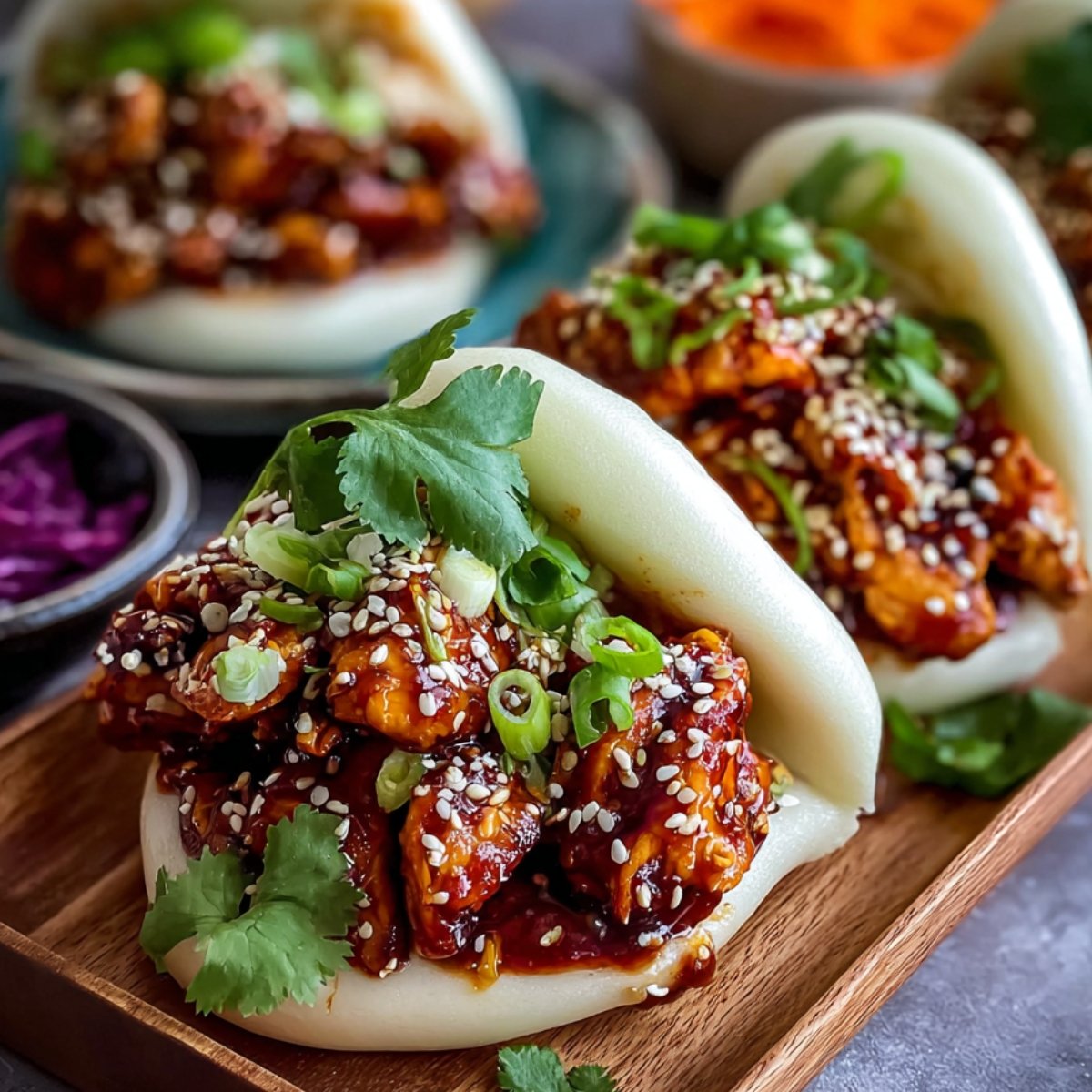
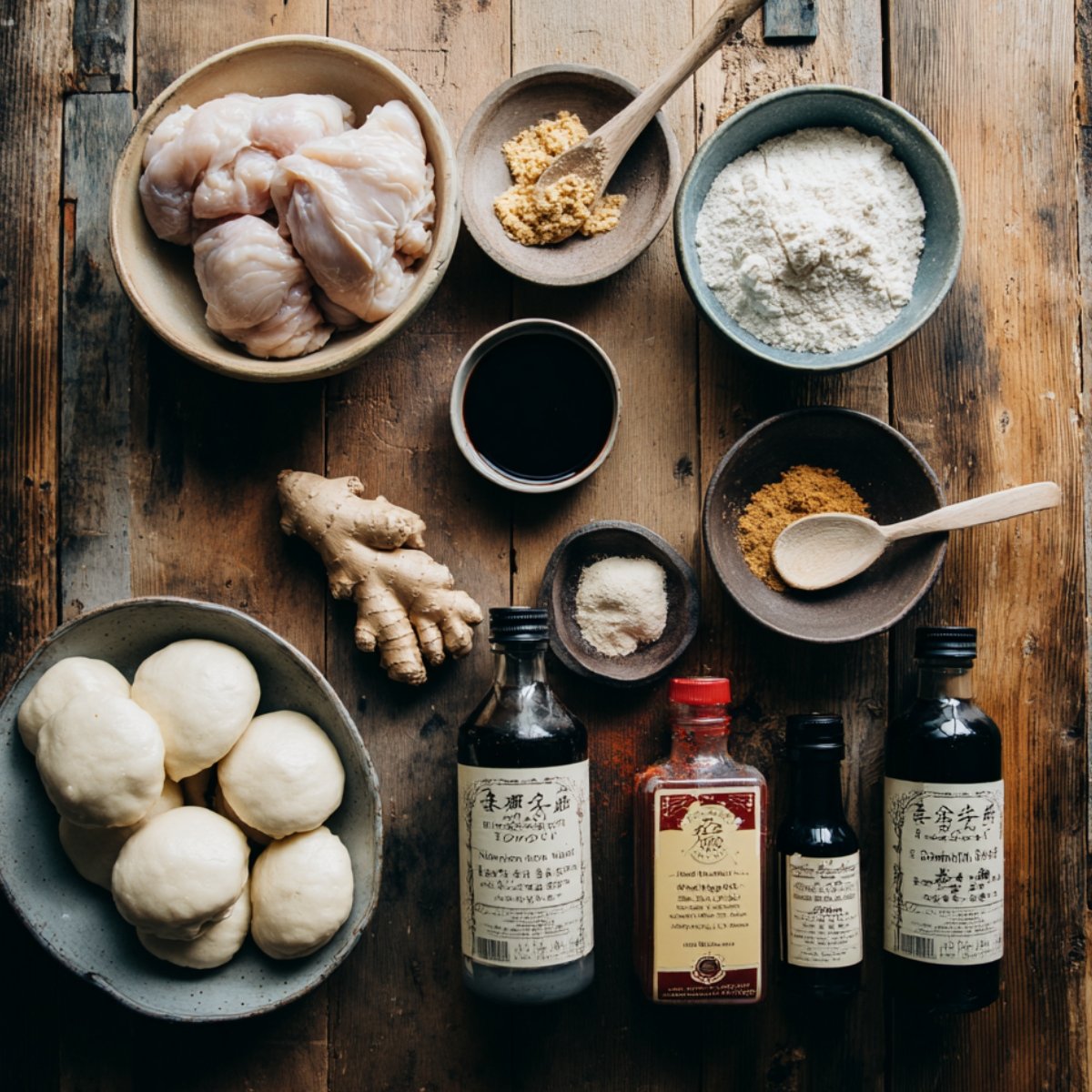
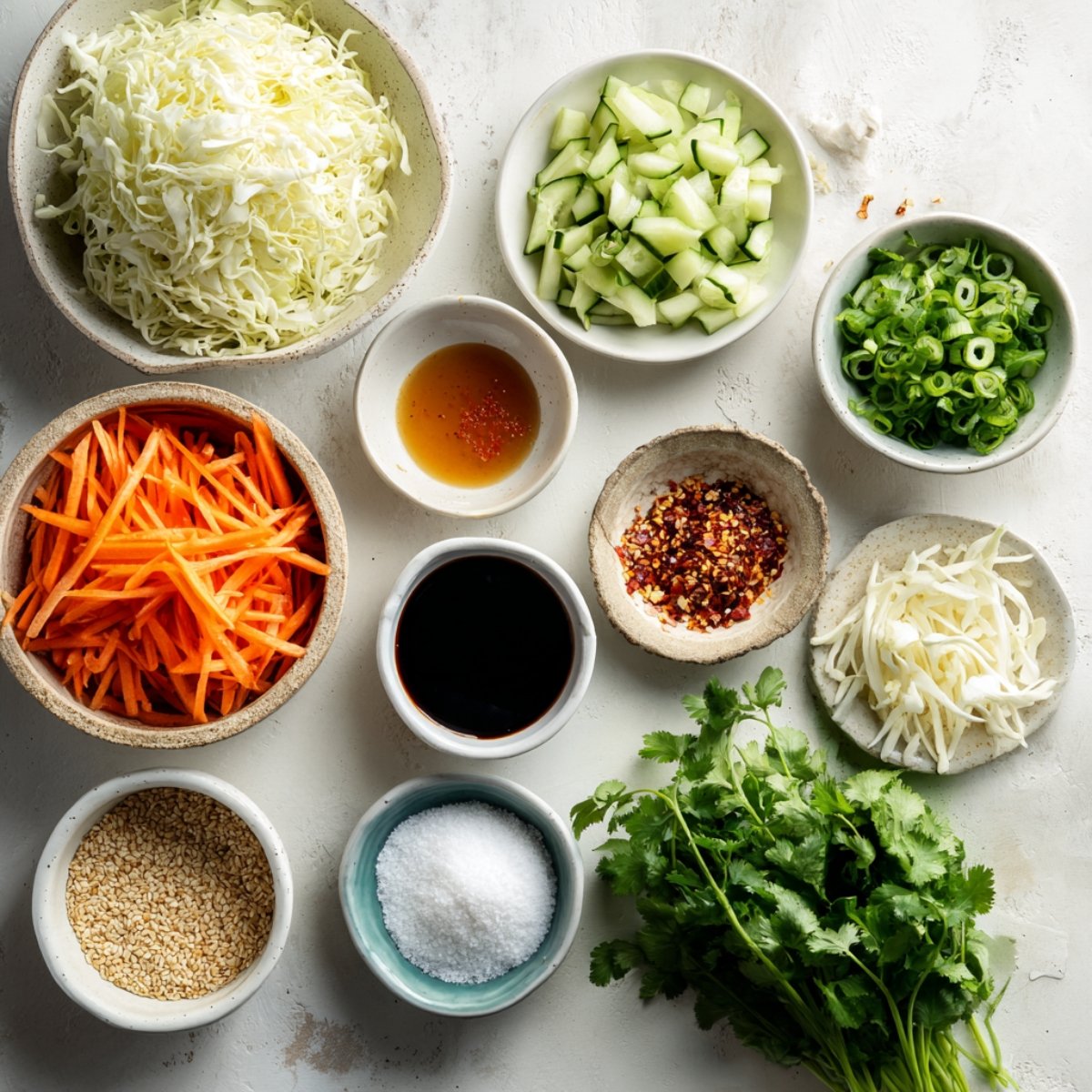
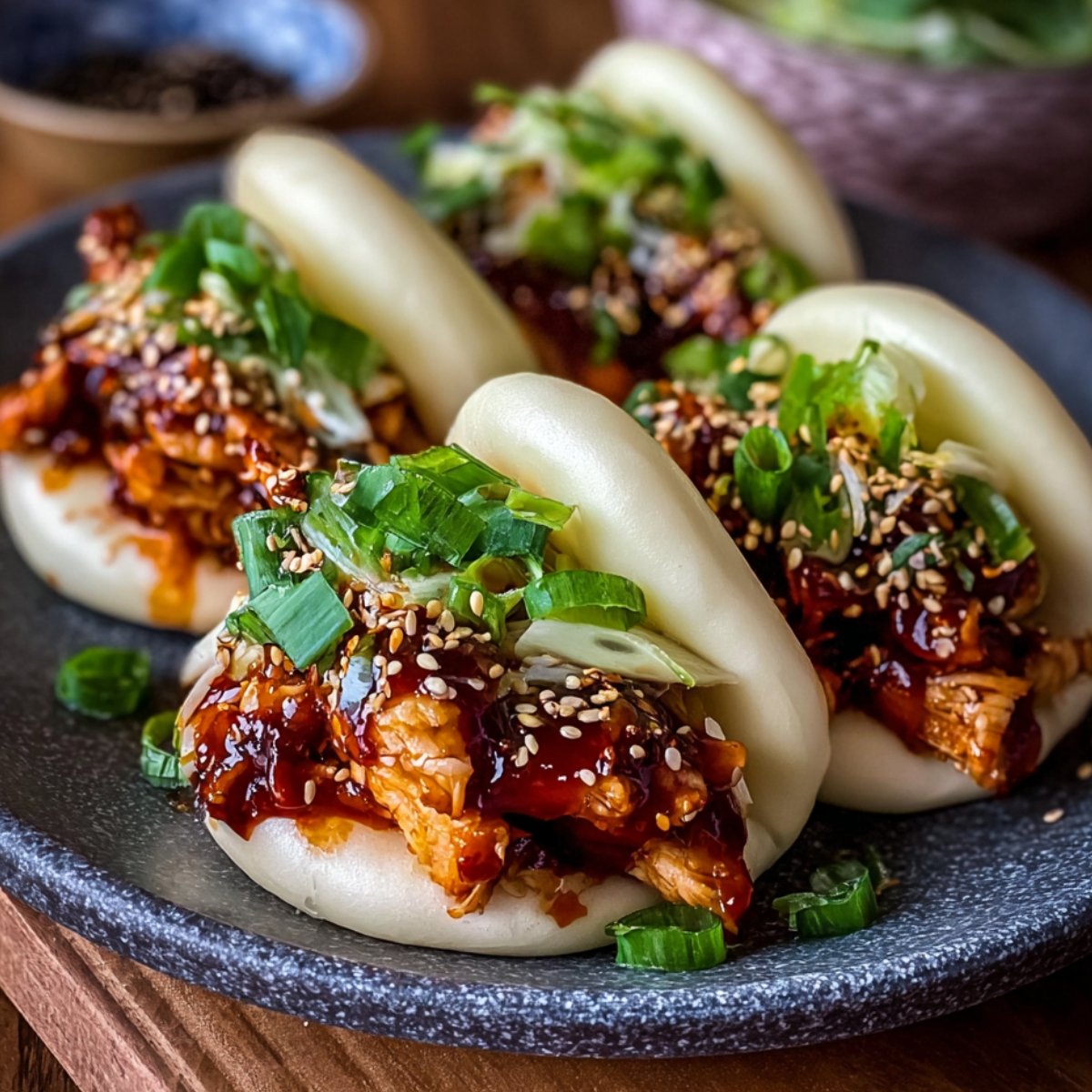


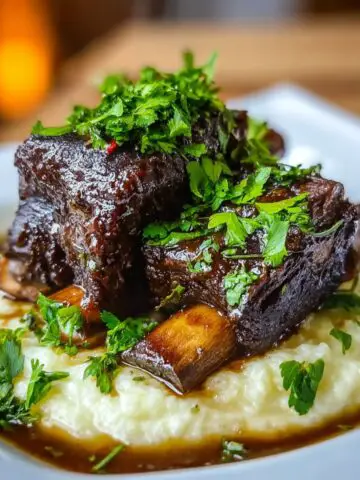
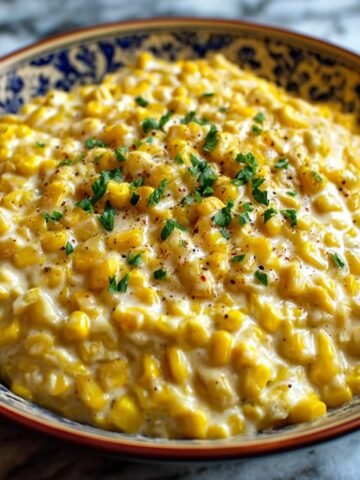
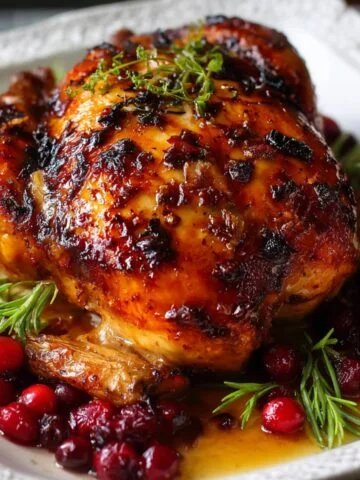
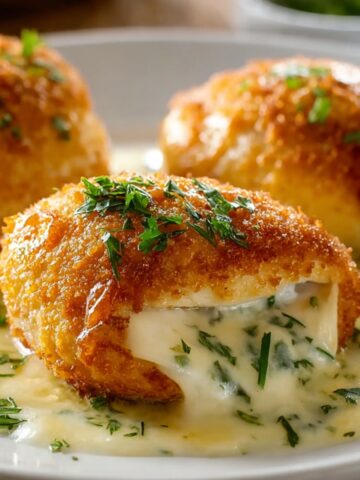
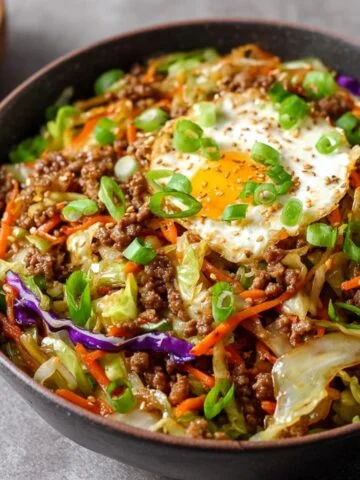
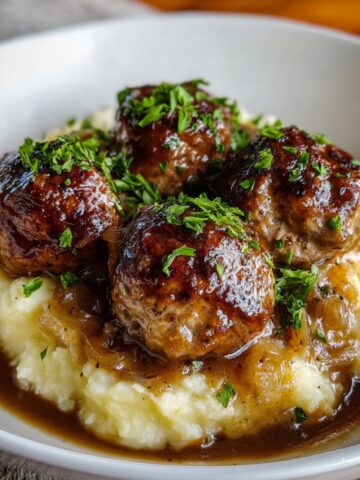
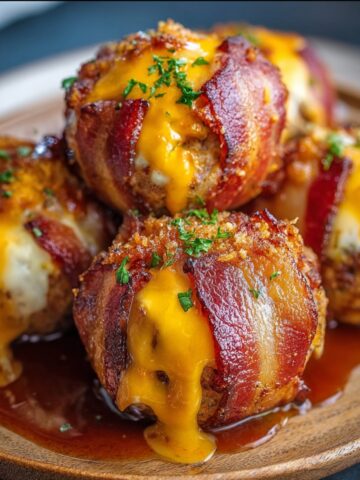
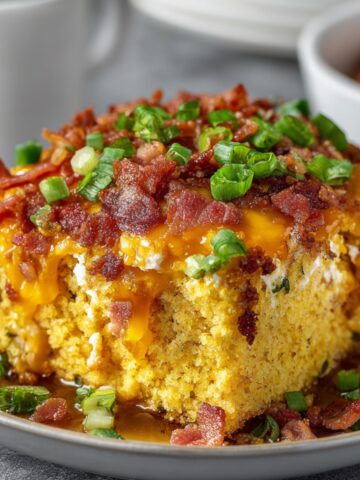

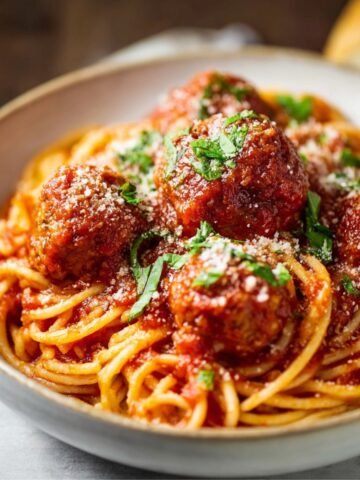
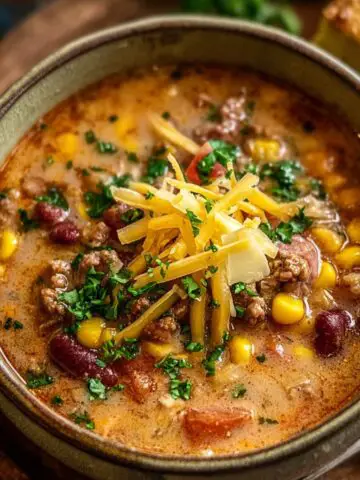
Leave a Reply